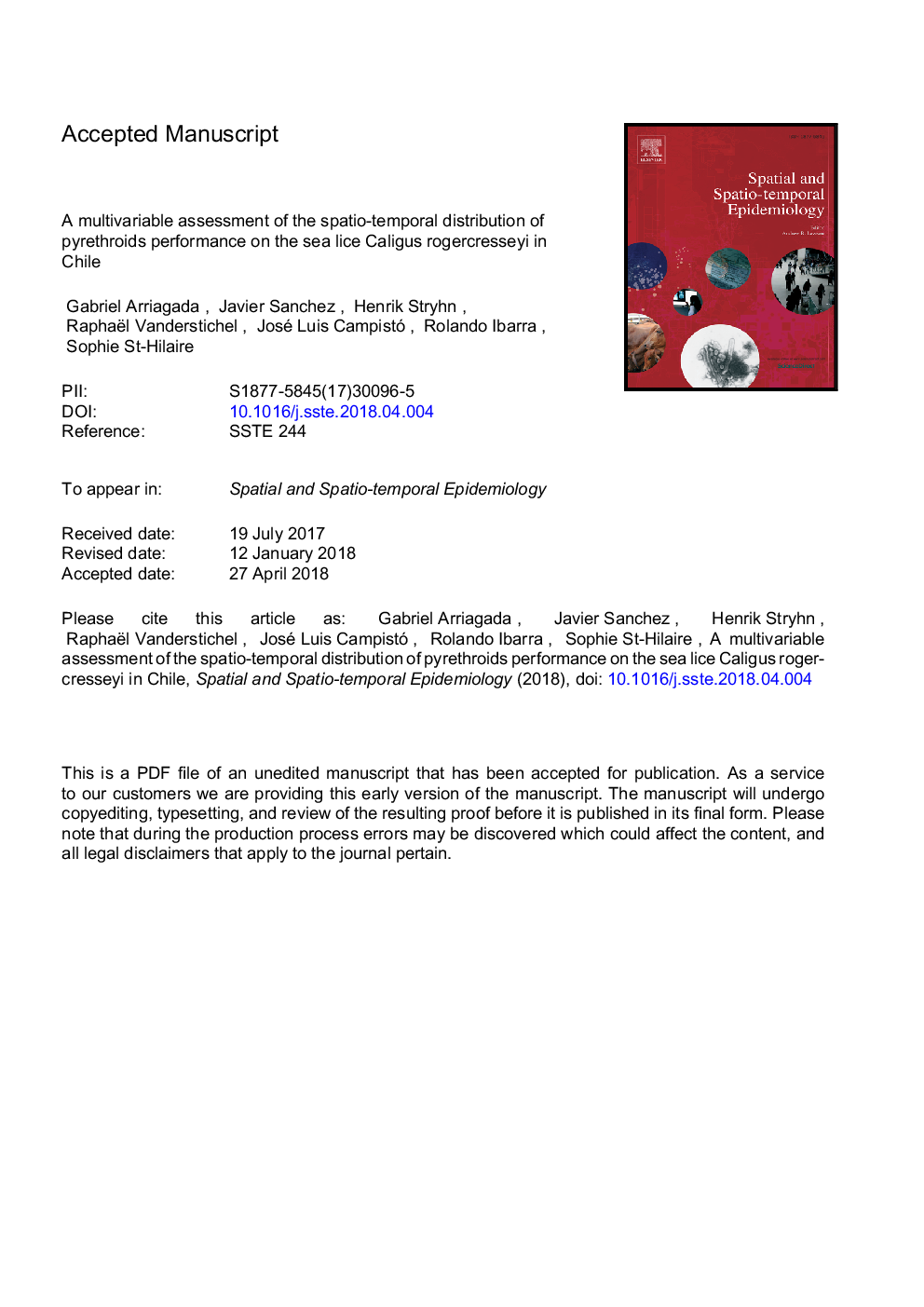| Article ID | Journal | Published Year | Pages | File Type |
|---|---|---|---|---|
| 7495726 | Spatial and Spatio-temporal Epidemiology | 2018 | 44 Pages |
Abstract
Synthetic pyrethroids have been widely used in Chile to control the sea lice Caligus rogercresseyi, a major ectoparasite of farmed salmon. Although resistance of C. rogercresseyi to pyrethroids has been reported in Chile, there is no information regarding the geographic extent of this problem. In this study we explored the spatial and temporal variation of C. rogercresseyi's response to pyrethroids in Chile from 2012 to 2013. We modeled lice abundance one week after treatment with a linear mixed-effects regression, and then we performed spatial and spatio-temporal cluster analyses on farm-level effects and on treatment-level residuals, respectively. Results indicate there were two areas where the post-treatment lice counts were significantly higher than in the rest of the study area. These spatial clusters remained even once we adjusted for environmental and management predictors, suggesting unmeasured factors (e.g. resistance) were causing the clustering. Further investigation should be carried out to confirm this hypothesis.
Related Topics
Health Sciences
Medicine and Dentistry
Public Health and Health Policy
Authors
Gabriel Arriagada, Javier Sanchez, Henrik Stryhn, Raphaël Vanderstichel, José Luis Campistó, Rolando Ibarra, Sophie St-Hilaire,
